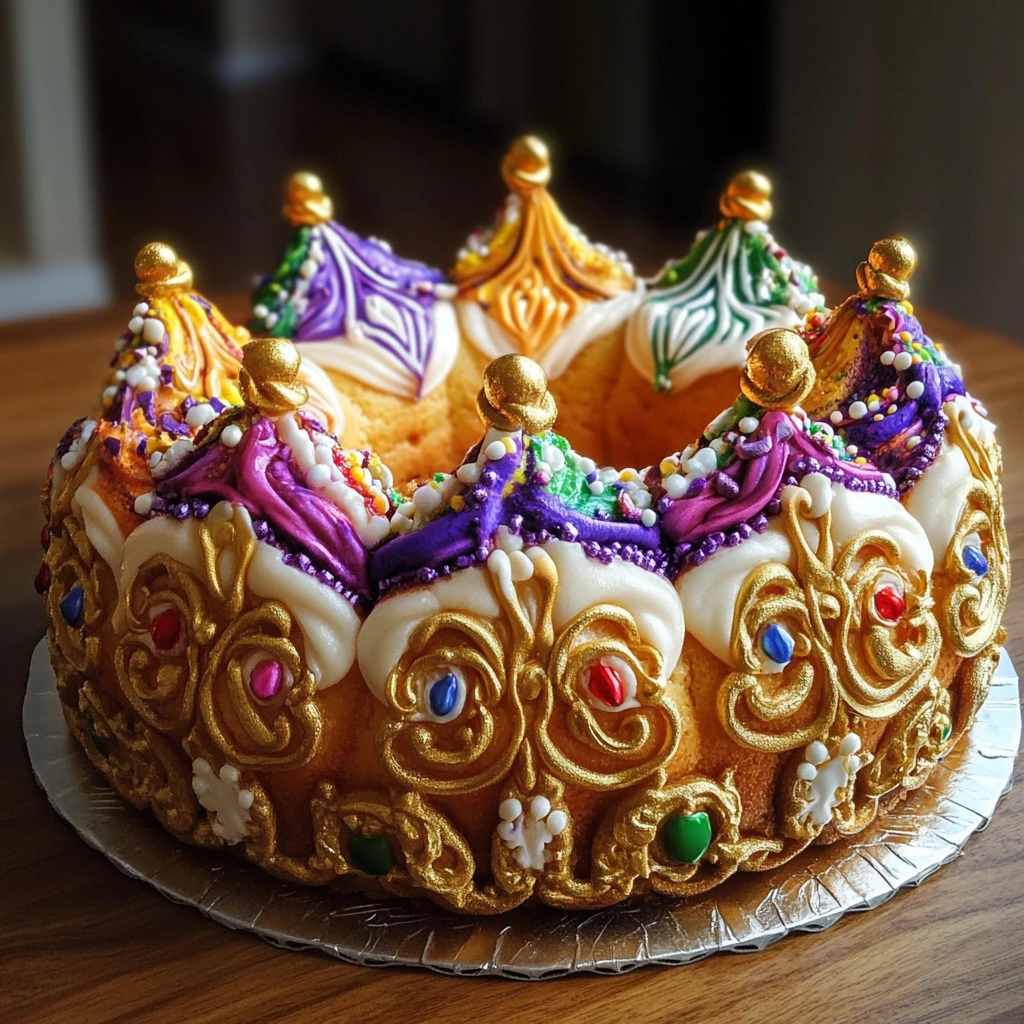King Cake is more than just a dessert; it’s a cherished tradition that defines Mardi Gras celebrations. This colorful cake, often decorated with vibrant purple, green, and gold sugars, is a symbol of joy, unity, and festivity. Traditionally served during the Carnival season, it is a must-have for anyone partaking in Mardi Gras festivities, especially on Fat Tuesday.
Hidden within the cake is a small figurine, known as the “King Cake Baby,” adding an element of fun and anticipation to every slice. Whether you’re baking it at home or picking it up from a local bakery, King Cake brings people together, making every Mardi Gras celebration memorable. In this post, we’ll dive into the history of King Cake, explore its ingredients, and share tips for making the perfect one at home. Let’s unlock the secrets to this delicious and beloved treat!
The History of King Cake: A Sweet Tradition with Deep Roots
Mardi Gras Origins
Mardi Gras, French for “Fat Tuesday,” has roots in ancient European traditions. It marks the last day of feasting before the start of Lent, a period of fasting and reflection for Christians. The celebration was brought to the U.S. by French settlers, particularly to New Orleans, in the early 18th century. Over time, it grew into a grand festival known for its parades, costumes, and, of course, King Cake.
The King Cake tradition ties to the biblical story of the Three Kings, who brought gifts to the baby Jesus. The cake, shaped like a ring, symbolizes a crown, and the hidden figurine inside represents the Christ child. Finding the “King Cake Baby” brings good luck and the responsibility of hosting next year’s party or providing the next cake. Mardi Gras became a way to embrace indulgence before the somber period of Lent began.
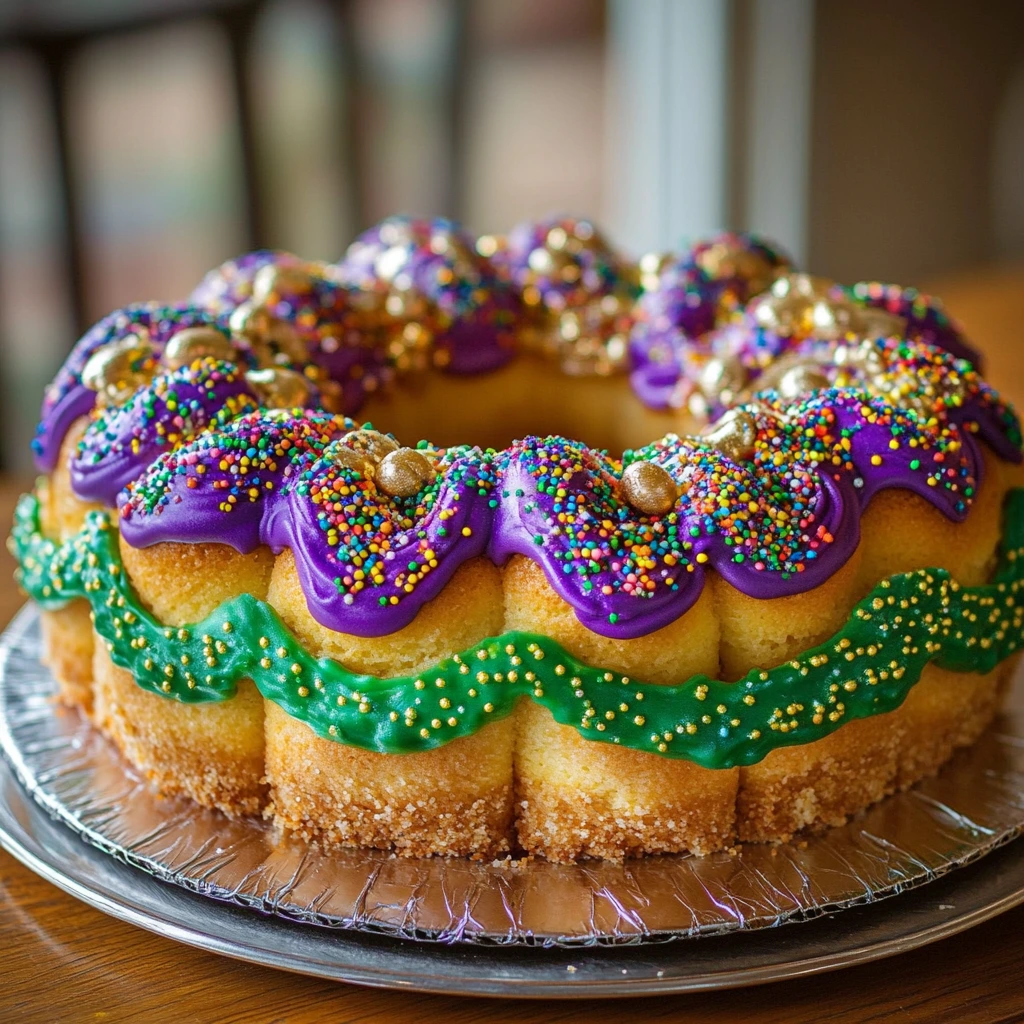
The King Cake Symbolism
The King Cake is rich in symbolism, with every aspect of the cake reflecting a deeper meaning. The shape of the cake, a ring, represents the unity and eternity of the season. It symbolizes a crown, paying homage to the Three Kings who visited the baby Jesus in the nativity story.
The cake’s colorful decorations—purple, green, and gold—hold specific meanings. Purple represents justice, green stands for faith, and gold symbolizes power. These colors are rooted in the traditions of Mardi Gras and are tied to the celebration’s spirit of joy and revelry.
The hidden figurine inside the cake, often a small plastic baby, adds another layer of symbolism. Whoever finds it is said to have good luck and must host the next party or provide the next King Cake. This tradition brings an element of fun and excitement to the celebration.
King Cake’s Evolution
King Cake has evolved significantly since its origins. It began as a simple European pastry, similar to a sweet bread, baked to celebrate the Feast of Epiphany. Early versions were simple, typically filled with fruit or cream and topped with sugar or icing.
When brought to New Orleans, the tradition adapted to local tastes. Over time, King Cake became synonymous with Mardi Gras, a celebration of excess before Lent. The use of vibrant colors—purple, green, and gold—became popular in the 19th century and remains a defining feature today.
The figurine inside the cake also evolved, with the original coin or bean being replaced by a small plastic baby in the modern version. In recent years, bakers have experimented with fillings and decorations, introducing flavors like chocolate, praline, and cream cheese. King Cake has thus grown from a traditional religious symbol to a beloved treat enjoyed by all during Mardi Gras.
Ingredients That Make the Perfect King Cake: What You Need to Know
Essential Ingredients
The essential ingredients are simple yet vital for creating the perfect texture and flavor. The base of the cake is typically made from a yeast dough, which gives it a soft, pillowy texture. Flour, sugar, and salt are key, providing structure and sweetness.
Butter and eggs are added for richness, contributing to the cake’s tender crumb. Milk or buttermilk is often used to add moisture and a subtle tang. Yeast is crucial for the dough’s rise, giving the cake its airy texture.
Cinnamon is the signature spice, providing the classic flavor that defines King Cake. Some recipes may include nutmeg or allspice for an extra depth of flavor. The dough is rolled out, sprinkled with a cinnamon-sugar mixture, and then braided or twisted into a ring shape before baking. The final touch is the colorful sugar glaze, completing the festive look.
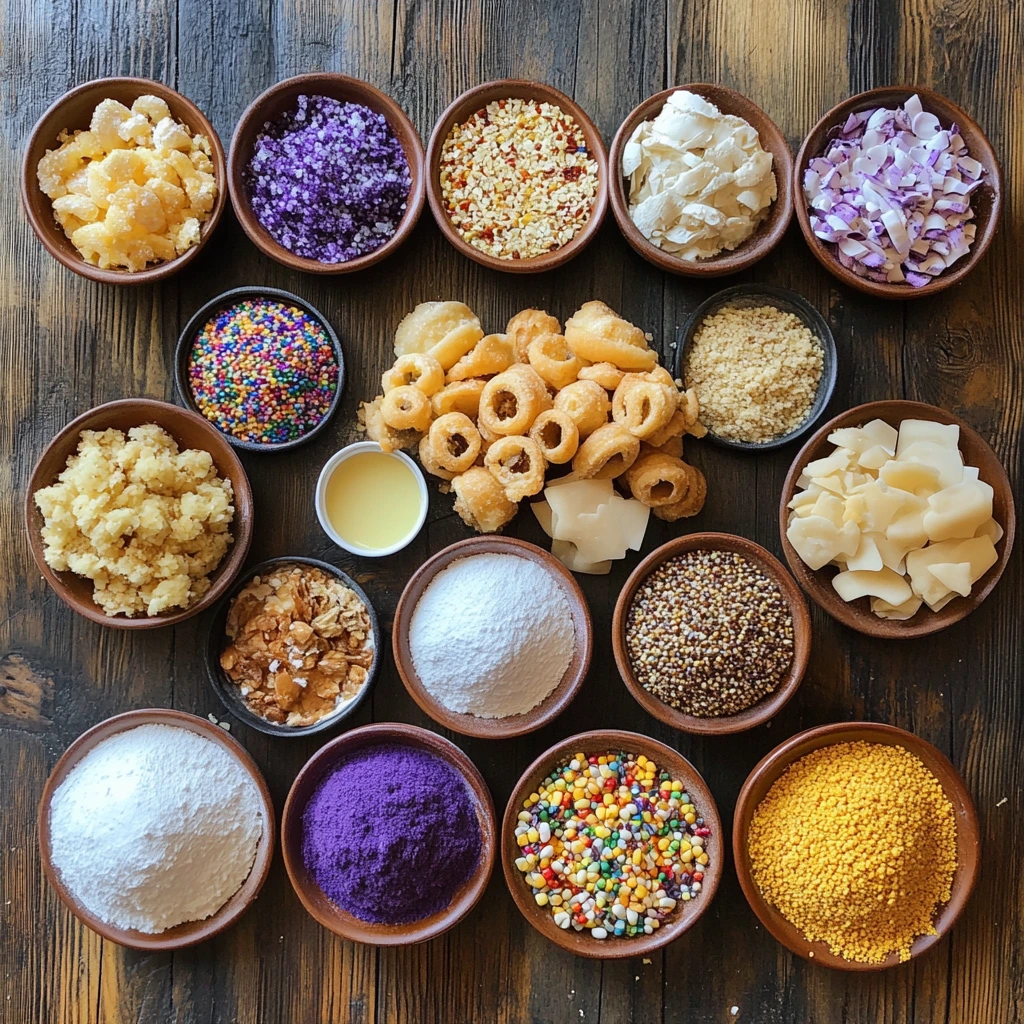
Fillings
Fillings add a unique twist to this classic dessert. The traditional filling is a cinnamon-sugar mixture, which gives the cake its signature sweet and spiced flavor. However, bakers have become more creative over the years, offering a variety of fillings.
One popular choice is cream cheese, which adds a rich, tangy flavor that contrasts nicely with the sweetness of the dough. Another common filling is praline, which brings a caramelized, nutty taste to the cake. Fruit fillings like raspberry or lemon also add a refreshing burst of flavor.
Some bakers even experiment with chocolate or almond paste, offering an indulgent alternative. While the traditional filling remains beloved, modern versions provide options for every taste preference. These innovative fillings ensure that King Cake remains a fun and diverse treat, enjoyed by everyone at Mardi Gras celebrations.
Decorating Your King Cake
Decorating is a fun and colorful part of the tradition. The most iconic decoration is the vibrant sugar topping, which comes in the three Mardi Gras colors: purple, green, and gold. Each color holds special meaning—purple for justice, green for faith, and gold for power.
To achieve the bright sugar effect, colored sugars are sprinkled generously over the icing once the cake has cooled. The sugar can be applied in stripes or in a more random, festive pattern. Some bakers also add a drizzle of icing over the top for extra sweetness.
Another traditional decoration is the hidden “King Cake Baby.” This small figurine, usually plastic, is tucked inside the cake before baking. Whoever finds it in their slice is often expected to host the next Mardi Gras gathering or provide the next cake. The decorations make King Cake as visually exciting as it is delicious!
How to Make King Cake: Step-by-Step Recipe for a Homemade Delight
Preparation Tips
Preparation is key to making the perfect King Cake. Start by ensuring your yeast is active. Always test it by mixing it with warm water and sugar before adding it to the dough. This step ensures the cake will rise properly.
When mixing the dough, be careful not to overwork it. Knead it just until it’s smooth, as over-kneading can result in a dense texture. Let the dough rest in a warm, draft-free area to rise fully, which typically takes about an hour.
Rolling out the dough should be done carefully. Aim for an even thickness to ensure uniform baking. When spreading the cinnamon-sugar mixture, don’t skimp on the filling—it’s key to the flavor.
Finally, when shaping the dough into a ring, make sure the ends are sealed properly. This will prevent the filling from spilling out during baking.
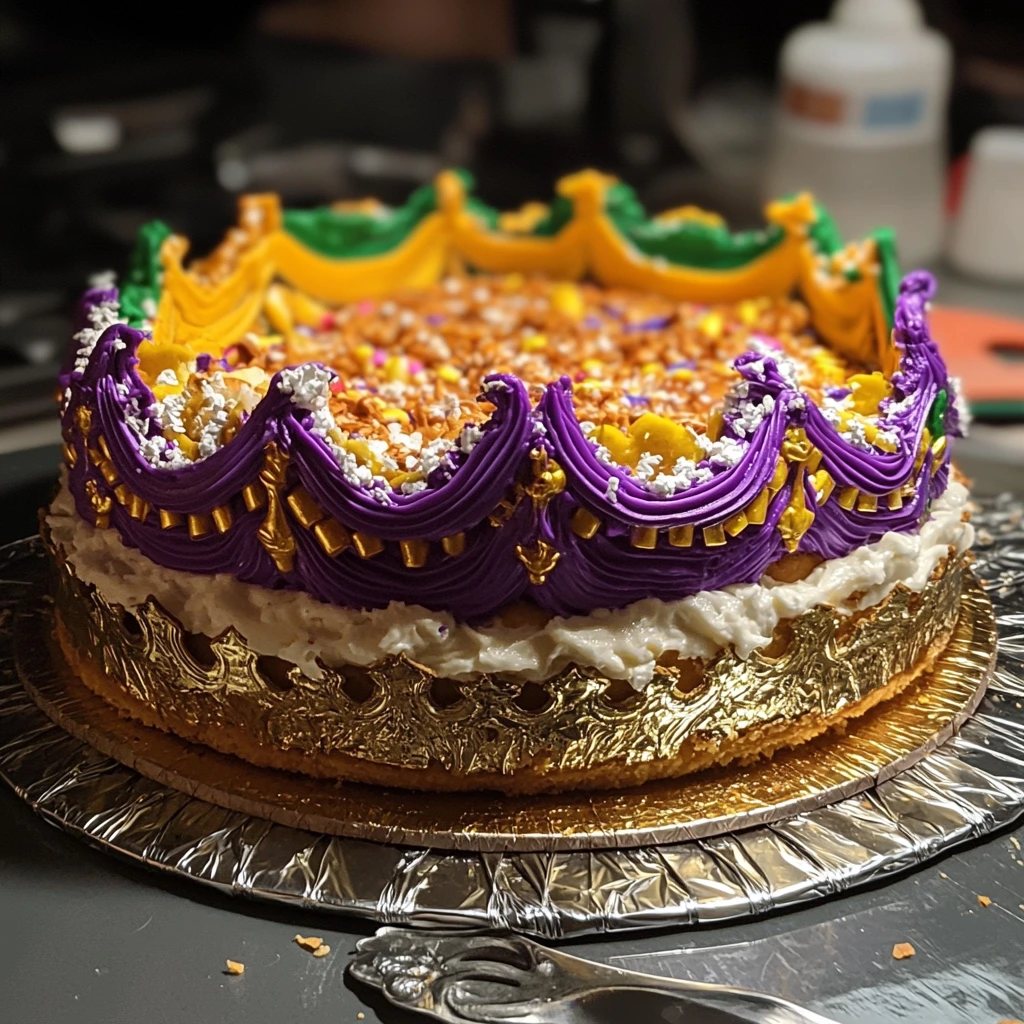
Step-by-Step Guide
Making King Cake at home is a fun and rewarding process. Start by mixing your yeast with warm water and a pinch of sugar. Let it sit for a few minutes until bubbly. Next, combine flour, sugar, and salt in a large bowl. Add the yeast mixture, eggs, butter, and milk. Mix until the dough forms and knead for about 5-7 minutes until smooth.
Once kneaded, cover the dough and let it rise for about an hour, or until it doubles in size. After rising, roll out the dough into a large rectangle. Spread a mixture of cinnamon and sugar evenly across the dough.
Carefully roll the dough into a log and shape it into a ring. Place the dough on a baking sheet, seal the ends, and let it rise again. Bake the cake at 350°F for 25-30 minutes, until golden brown. Let it cool before adding your icing and colorful sugars.
King Cake Baking Tips
Baking a King Cake requires attention to detail for the best results. First, make sure your oven is preheated to 350°F before placing the cake inside. This ensures even baking. If you’re concerned about the cake browning too quickly, cover it loosely with aluminum foil during the first half of baking.
Another important tip is to check the cake’s doneness by tapping on the bottom. It should sound hollow when fully baked. If you don’t have a thermometer, you can also insert a toothpick in the center to ensure it comes out clean.
Avoid opening the oven door too often while baking, as this can cause temperature fluctuations. After baking, let the King Cake cool on a wire rack for at least 15 minutes before icing. This prevents the glaze from melting into the cake. Proper cooling ensures a better texture and presentation.
King Cake Variations: Modern Twists on a Classic Dessert
Creative Fillings
While traditional King Cake fillings are delicious, getting creative with flavors can add a fun twist. One popular variation is chocolate, where you can spread a layer of melted chocolate or chocolate chips along with the cinnamon-sugar. This results in a rich, indulgent filling that chocolate lovers will adore.
For a nutty alternative, try a praline filling. Combine brown sugar, butter, and chopped pecans to create a caramelized, nutty filling that complements the soft dough. Another fun option is a fruit-based filling, such as raspberry, lemon, or apple. These add a burst of freshness that balances the cake’s sweetness.
You can even experiment with cream cheese, mixing it with vanilla or almond extract for a smooth, tangy filling. Each of these creative fillings offers a new take on the traditional King Cake, making it even more customizable for your Mardi Gras celebration.
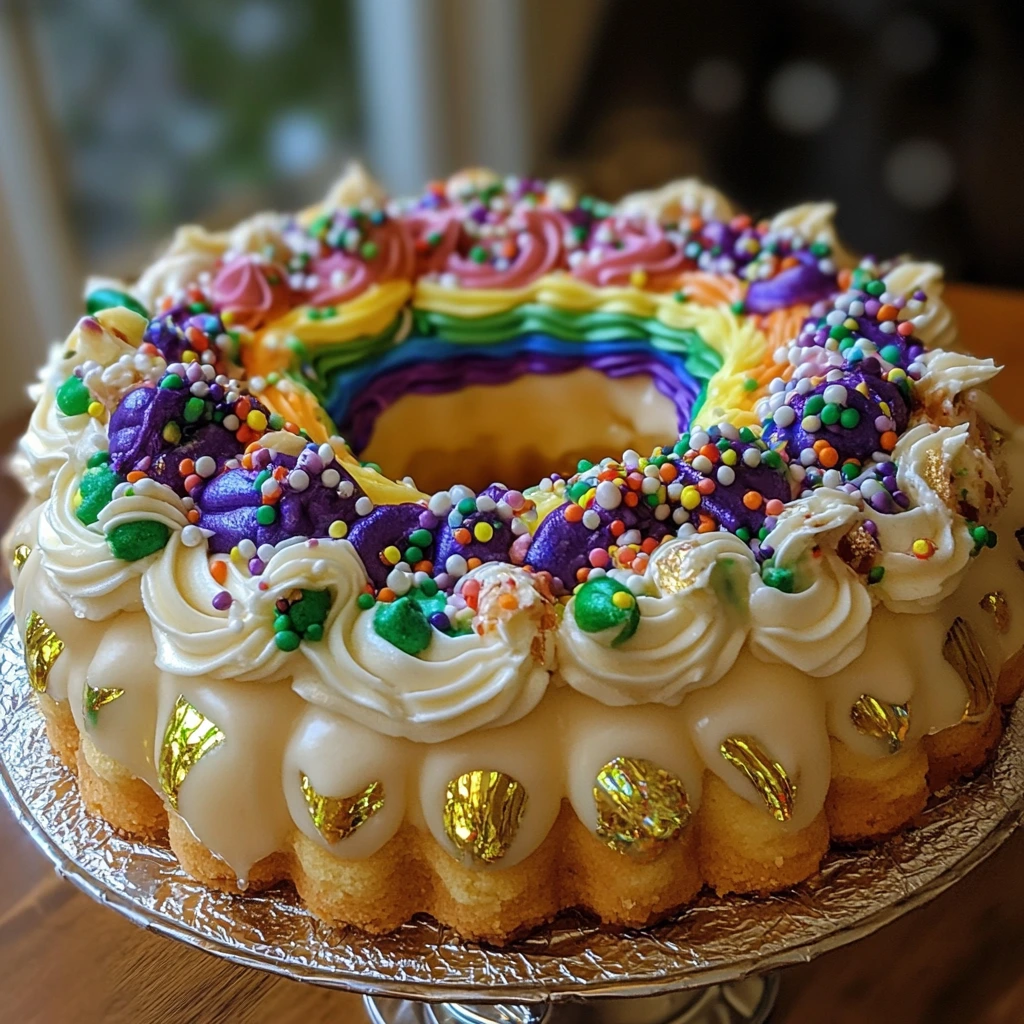
Vegan or Gluten-Free Options
If you’re looking for vegan or gluten-free King Cake options, there are simple swaps you can make. For a vegan version, replace butter with plant-based alternatives like coconut oil or vegan butter. Use a non-dairy milk such as almond or oat milk instead of regular milk. For the filling, substitute cream cheese with a vegan version or use a combination of coconut cream and powdered sugar.
For a gluten-free, swap regular flour with a gluten-free all-purpose flour blend. Make sure the blend includes xanthan gum or another binding agent to help with texture. You can also use gluten-free yeast, as some brands may contain traces of gluten.
Both options can still be decorated traditionally with colored sugars. By making these swaps, everyone can enjoy a delicious, inclusive King Cake during Mardi Gras celebrations.
King Cake Inspired Desserts
If you’re looking for King Cake-inspired desserts, there are plenty of creative variations to try. Its cupcakes are a fun, individual twist. You can bake small cupcakes using the same dough, filling them with cinnamon-sugar or cream cheese, and top with colorful icing and sprinkles.
Another idea is King Cake bars, where the dough is pressed into a baking dish, layered with filling, and baked into squares. They’re easy to slice and serve at parties.
King Cake pancakes are another fun twist. Make pancakes and top them with the classic cinnamon-sugar filling, icing, and colored sugars for a Mardi Gras breakfast.
For a lighter option, try King Cake-flavored donuts. Use cinnamon, sugar, and a sweet glaze to capture the flavors of the traditional cake in a handheld form. These inspired treats bring Mardi Gras joy to a variety of delicious formats.
The Mardi Gras Experience: Celebrating with King Cake and Friends
Mardi Gras Parties
Mardi Gras parties are all about fun, festivities, and food, with King Cake being the star. These parties are typically filled with vibrant decorations, music, and costumes. Guests often wear beads and masks, embracing the colorful spirit of the celebration. King Cake serves as the centerpiece, drawing attention with its bright colors and festive appearance.
At Mardi Gras parties, guests take turns slicing the cake, hoping to find the hidden figurine. The person who finds it is often expected to host next year’s party or provide the next King Cake. Many parties also feature traditional drinks, to complement the food.
Whether held at home, a bar, or a parade float, Mardi Gras parties create an atmosphere of joy and community. Preparing King Cake brings people together, making these gatherings even more memorable with its sweetness and tradition.
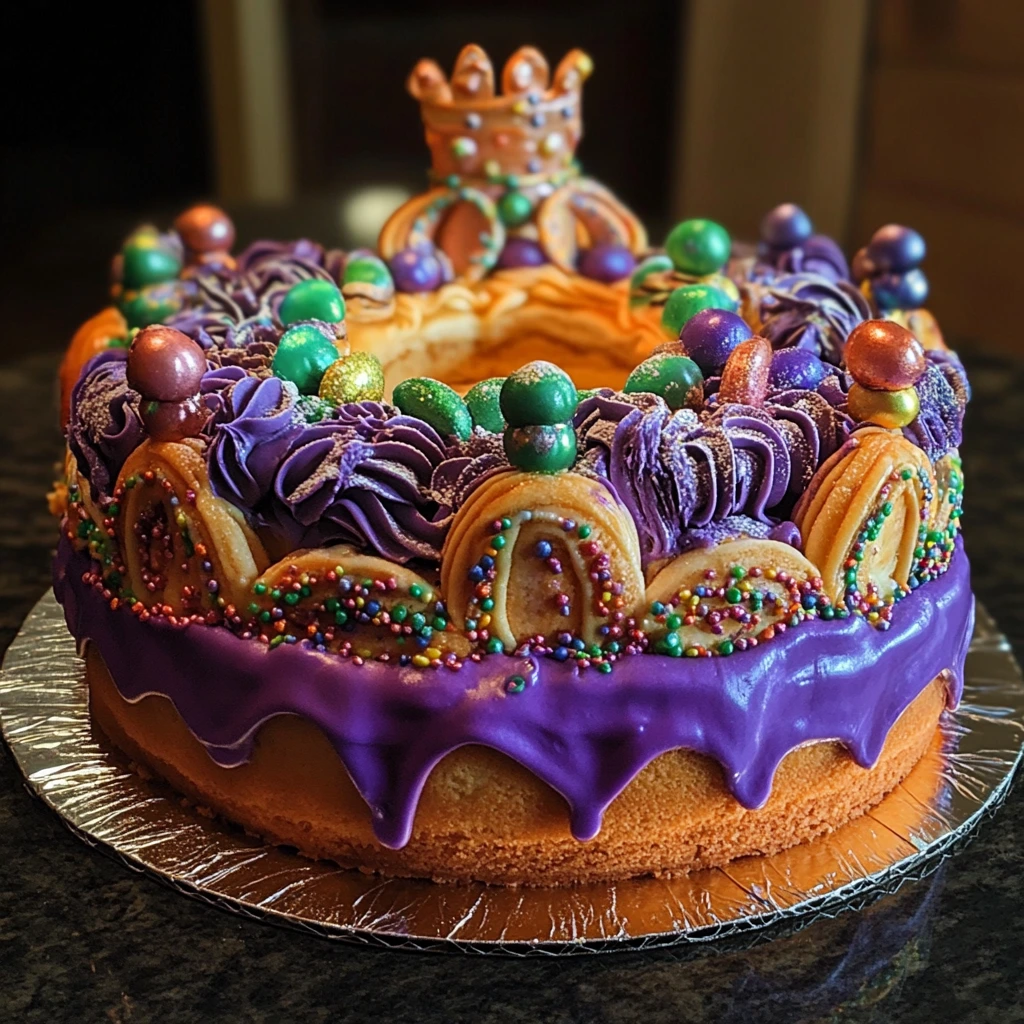
King Cake Etiquette
King Cake etiquette is an important part of Mardi Gras traditions. When serving the cake, it’s common for the host to hide a small figurine, often a plastic baby, inside. The person who finds the figurine in their slice is expected to either buy the next King Cake or host the next Mardi Gras party.
This tradition adds an element of fun and excitement to the celebration. However, it’s important to let guests know the figurine is inside, so no one accidentally bites into it.
It’s also considered polite to share the King Cake with others. At larger gatherings, people take turns cutting the cake and sharing slices. Sometimes, the host may offer a special prize or recognition for finding the baby.
Respecting these customs adds to the festive spirit and helps everyone feel part of the celebration. It’s all about fun, community, and keeping the Mardi Gras tradition alive.
Where to Buy the Best King Cake
When looking to buy the best King Cake, New Orleans is the place to be. Local bakeries like Gambino’s Bakery and Mona’s Café are famous for their traditional and creative versions. Both offer a variety of fillings, from cinnamon to cream cheese, and feature the iconic Mardi Gras colors.
For a unique twist, try Haydel’s Bakery, which is known for its rich and flavorful King Cakes, with options including chocolate and praline. Parkway Bakery & Tavern also offers a fantastic selection, with a long history in New Orleans.
Outside of Louisiana, some national brands like local bakeries that specialize in Mardi Gras treats offer excellent shipping options, ensuring everyone can enjoy the tradition. Many bakeries allow you to customize fillings, making it easy to satisfy all tastes. Whether local or online, these bakeries ensure your King Cake experience is unforgettable.
Conclusion: Why King Cake is the Ultimate Mardi Gras Dessert
King Cake is more than just a dessert; it’s a symbol of Mardi Gras celebration. From its rich history to the fun traditions it brings, it’s a treat that unites people. Whether you bake it at home or buy it from a local bakery, King Cake adds excitement and joy to any Mardi Gras party.
Its vibrant colors, creative fillings, and delicious flavors make it a memorable part of the festivities. This season, enjoy the sweet tradition and share in the spirit of Mardi Gras with a slice of King Cake!

